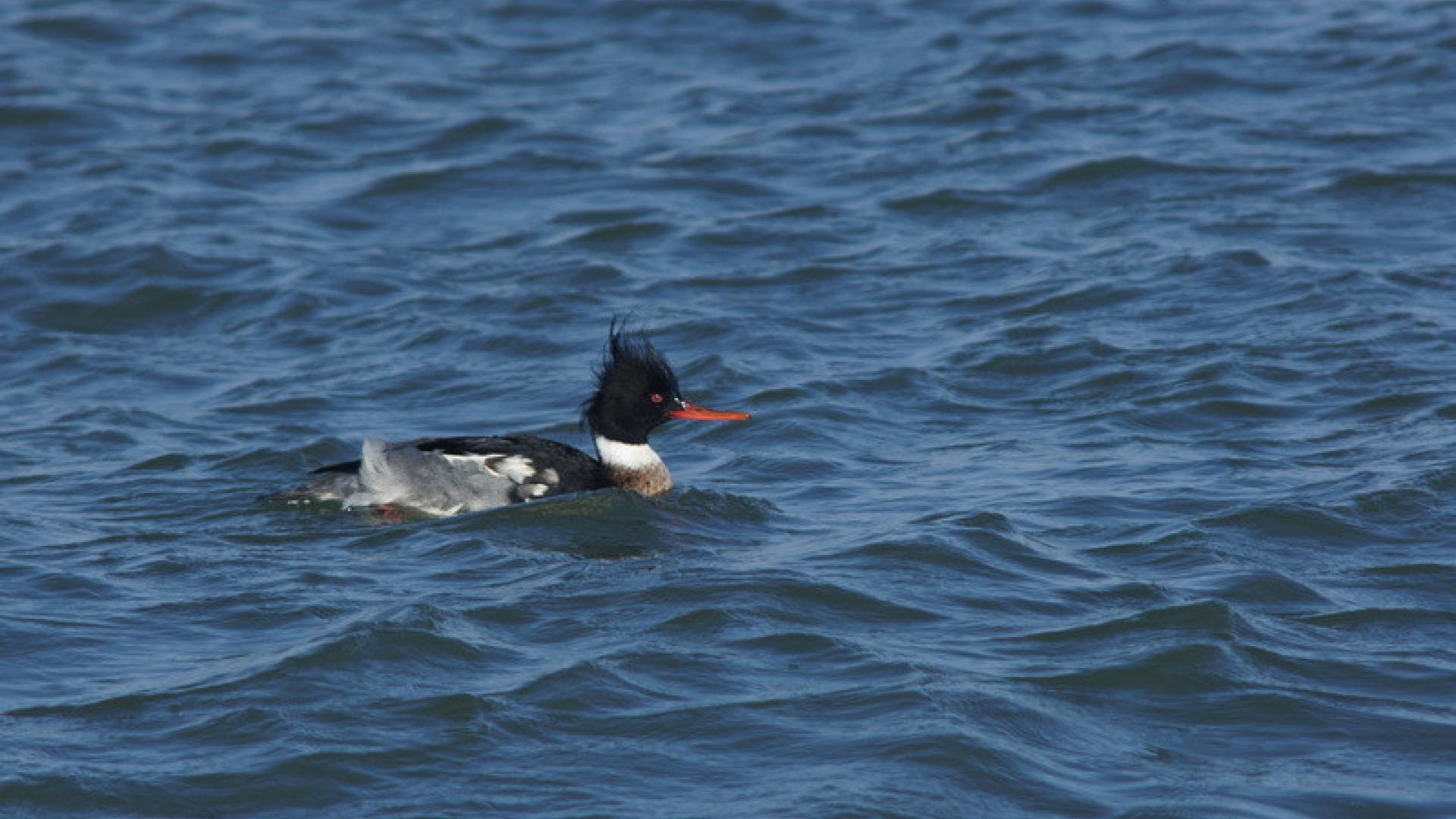An afternoon in the Valley
I took an afternoon this weekend and headed to the Lake Champlain Region with Wren to see what we could find. There have been a variety of birds arriving in the region and a friend of mine found a Tufted Duck (likely the same bird that was at the Champlain Bridge this winter) in Port Henry a few days earlier. I started in Westport like I often do and found the lake scattered with a few ducks, migrating Common Loons, and a few Horned Grebes that looked sharp in their breeding plumage. Also of note were a few Red-breasted Mergansers, which aren’t always easy to find in the valley. I always love seeing the handsome males.
I had similar luck and species at the Hoisington Brook overlook near the wastewater treatment plant, as well as in the sunny glare on Cole Bay as I looped Dudley Road in search of field birds. I then dropped to Port Henry, where I found little from the boat launch on the glassy lake surface. I continued on to the beach area, where the sandy point held a few gulls but nothing on the water. As I scoped across Bulwagga Bay to the Crown Point Peninsula, I could see a lot of distant ducks in the distortion of the heat shimmer. As it turned out, my friend who found the Tufted Duck called me and said she was just getting to the beach to look for it again. So we set off to Crown Point together in search of whatever we could find.
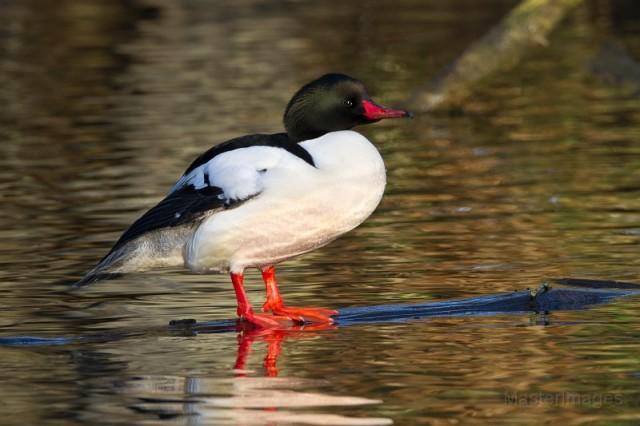
Lots of ducks at Crown Point
Wren was happy for the trip to Crown Point too. It meant she could run around for a bit, even though I kept her on a leash part of the time to keep her from getting into the bushes and potentially picking up an early tick despite the cool weather that day. We walked down to Fossil Rock, listening to small flocks of Golden-crowned Kinglets and Chickadees. Fossil Rock offers good viewing of the ducks along the marshy edge of the peninsula and Bulwagga Bay, and it also allows you to look north to scope the ducks — meaning the sun is at your back. Unconcerned about viewing angles and duck species, Wren swam and gleaned sticks from the lake, entertaining herself for hours while we scanned through the shifting and scattered mass of ducks. It was a good arrangement — Wren could do her thing while we did ours.
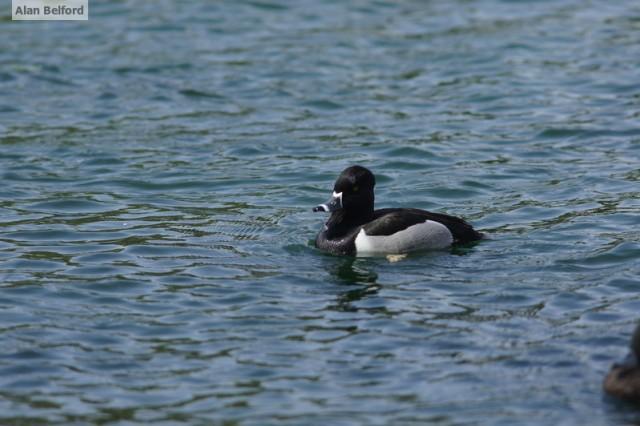
With the lake levels up, many of the trees along the shoreline were flooded, and ducks came and went through them while others were hidden by the remaining strands of marsh that the lake hadn’t yet inundated. So it was necessary to stand there for a while to give hidden birds a chance to move into view. We were quickly tallying a list, even with the obstructions. There were lots of Common Mergansers, Common Goldeneye, both Greater and Lesser Scaup, Bufflehead, and Ring-necked Ducks. We soon spotted one Canvasback and then another, as well as three Ruddy Ducks in the middle of the mixing flock — both of which are good finds in the valley. There were also more Red-breasted Mergansers, four Green-winged Teal, a few passing Wood Ducks, a Gadwall or two, and curiously enough, only a few Mallards.
A Harlequin Duck!
As we stood there, two Osprey called and soared overhead while a Ruffed Grouse drummed intermittently off in the woods. I occasionally rested my eyes from the scope to focus on the woods around us.
The diversity of habitats is one of the best things about Crown Point. But then I spotted a small, dark duck in the middle of the Common Goldeneye. I hesitated briefly to say something so as not to get my friend too excited in case I didn’t see the bird well at first. I didn’t want to get her jazzed up only to realize I had made a mistake. But sure enough, I had spotted what appeared to be a female Harlequin Duck — a very rare species in the valley and one we generally find in the northeast along rocky coasts and jetties during the winter months. I had just seen some in Massachusetts two weeks earlier - and on further inspection this bird turned out to be an immature male bird - with some of the features initially hard to see from a distance.
As this was a new bird in the region for her, my friend was wicked excited. We both had good (although distant) looks at the Harlequin and my friend texted another birding friend who would be interested in the duck for his regional list. She then spotted a Surf Scoter to add to our growing list of ducks.
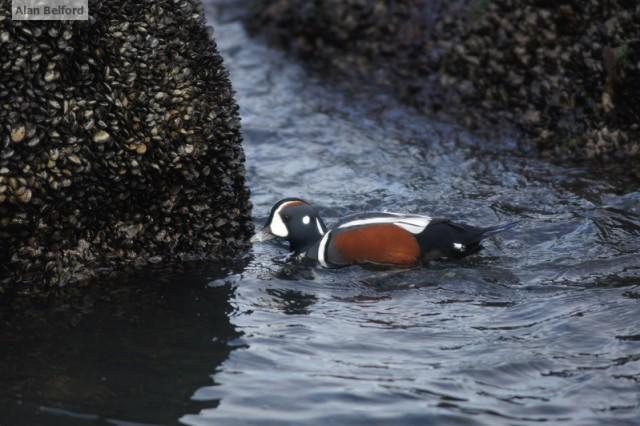
Our other friend arrived a short time later and we were able to relocate the Harlequin. We then started scanning the entire flock again, adding Pied-billed Grebe and a drake Northern Shoveler. We finally tired of staring through our scopes, packed up, and walked out. We never did find that Tufted Duck — it is likely still out there — it was just staying out of sight.
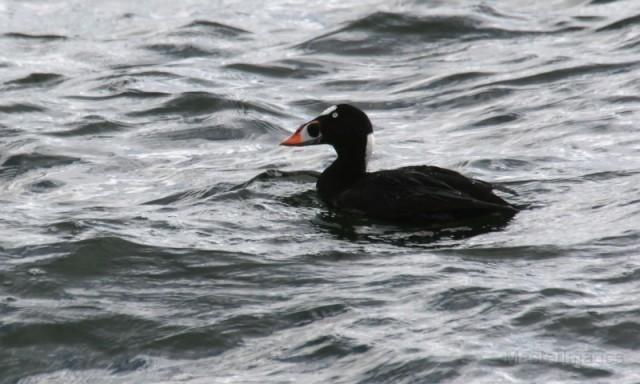
On my way home I spun through the back roads on the peninsula and stopped at a few pull-offs to view the marsh on the south end of Crown Point. I added American Black Duck, Hooded Merganser, and American Wigeon for my efforts, bringing me to 20 species of waterfowl during the afternoon. I also found an American Pipit in the fields, bringing my total count to 63 species — a good day in April — and with warm weather coming, it will be fun to find out what shows up next.
Spring is a great time of year in the bird world, and now is a great time to plan your birding trip to the Lake Champlain Region's Adirondack Coast. Check out our birding, outdoor recreation, lodging, and dining pages to learn more!
